Treading water: struggling for a glass of water
A decade-long struggle against severe drinking water shortages in the coastal regions of Bangladesh has unfolded, marked by waterborne diseases, salinity issues, and a decline in agricultural land.
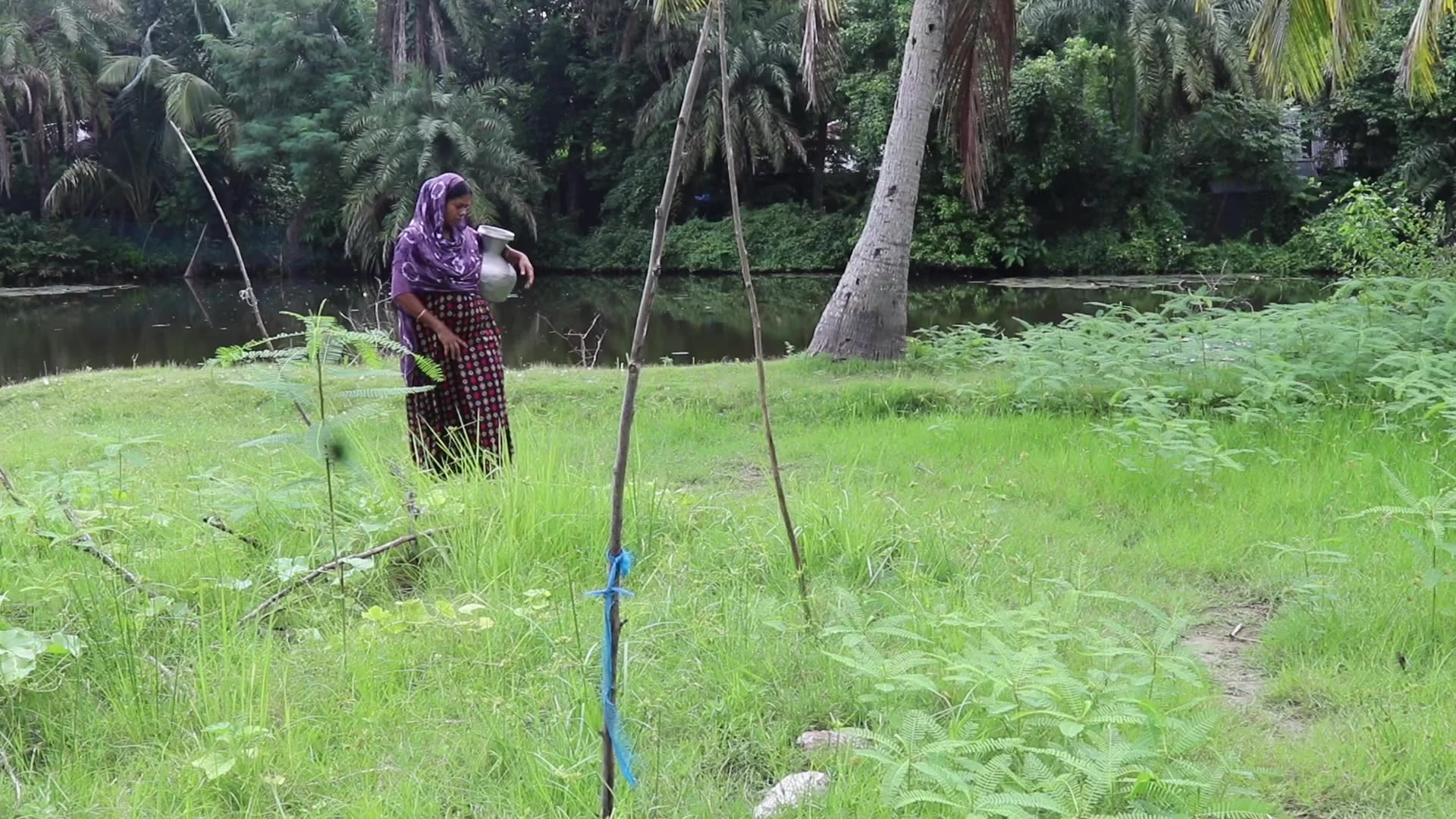
Adecade ago, Purnima Mandal's family often suffered from water-borne diseases like diarrhea and dysentery. Things only improved after Caritas Bangladesh's water doctor, funded by Caritas Switzerland, began purifying water with chlorine.
"We used to keep rainwater in big earthen pots and drink it. There is drinking water as long as it rains. But during the dry season, we drink water from the pond. Because of that, we get sick and have to spend a lot of money on medicine,” said Mandal, a housewife.
Since 2013, Caritas's water purification medicine, Water Doctor, developed by Caritas Switzerland, gained popularity in the Mongla area of Bagerhat, a coastal district in southern Bangladesh.
Water Doctor uses quantitative chlorine to purify water, making it sufficiently purified and useable. Switching to purified water with Caritas' Water Doctor made a significant difference.
Mandal noted, "Not only my family, but many families in the neighborhood did better because we got less sick and didn't have to go to the doctor. We could purify this water at a very low cost."
Through the project, the cost of purifying 400 liters of water was 40 taka (US$ 0.36), compared to the market price of around 800 taka (US$ 7.25) for 400 liters of purified supply water, making it a cost-effective solution.
Salinity, among other problems
The southern sub-region of Khulna is characterized by salinity, extending to the pond water and soil. Salinity is pervasive, making water purification the predominant challenge in this area.
Water, particularly provision of drinking water, poses a significant problem for the local population. In response, Caritas initiated collaboration with Water Doctors in 2013 to address this issue.
Access to clean and drinking water poses significant challenges on the southern coast. Women lose valuable working hours traveling long distances to fetch water, and communities bear financial burdens due to waterborne diseases.
The loss of working hours intensifies due to illness, and there are reported cases of women giving birth to disabled children. Coastal communities face numerous challenges, according to experts.
According to a study by the international organization Practical Action, from 1995 to 2015, agricultural land in South Bengal, particularly in the Khulna, Bagerhat, and Satkhira districts, has experienced a concerning decline.
Dams are being compromised by the drilling of holes to introduce brackish water for shrimp farming. Consequently, floods and persistent waterlogging are prevalent in these regions.
Agricultural land has been submerged in saline water for an extended period due to recurrent floods and permanent waterlogging, leading to a decline in land fertility.
The World Health Organization recommends a daily salt intake of no more than 5 grams per person. However, the people in this region are consuming more than 200 times that amount daily, posing severe health risks. Consequently, the incidence of stroke and heart attack is escalating alarmingly.
Professor Khandoker Qudrata Kibria, specializing in Soil, Water, and Environment Discipline at Khulna University, a coastal region institution, emphasized that salinity is at the core of the challenges faced by coastal communities.
This salinity issue affects both drinking water and agriculture, resulting in health problems such as diarrhea, dysentery, stomach issues, and skin diseases stemming from water quality concerns.
"NGOs operate with external funds, which imposes several limitations on their efforts. Those engaged in the commercial supply of pure water are motivated by profit. However, the provision of clean water should ideally be the responsibility of the government,” said Kibria.
Kibria added that a lasting solution to the problem could be the channelization of rivers, primarily through the excavation of ponds to manage the rising water.
‘The Doctor is out’
Despite the success of Caritas Bangladesh's Water Doctor, it faced challenges when Caritas Switzerland withdrew its operations from Bangladesh in 2020, leading to the discontinuation of the Water Doctor program.
Caritas Bangladesh attempted self-financing but eventually halted production in 2022.
Daud Jibon Das, director of Caritas Bangladesh in the Khulna region, explained, "Production difficulty is 30 taka (US$ 0.27), and those who sell it take 10 taka (US$ 0.091). But now, since there is no donor, if you want to make this product with our funding, its cost will rise above 100 taka (US$ 0.91)."
Caritas averaged sales of 2,500 bottles of chlorine per month. During storms or cyclones, this number increased to 10,000 bottles. In other words, with an average monthly sale of 2,500 bottles, a total of 1,000,000 liters of water was purified and consumed by people within that month.
Das said that at most, only 10 percent of the population can afford to purchase the safe water that was previously accessible to these individuals. The remaining majority resort to drinking pond water, with some opting to boil water for consumption.
There are those who store rainwater in tanks, typically of 1000 or 2000 liters, sustaining them for approximately 6 to 8 months. For the remainder of the time, they rely on water sourced from ponds or rivers.
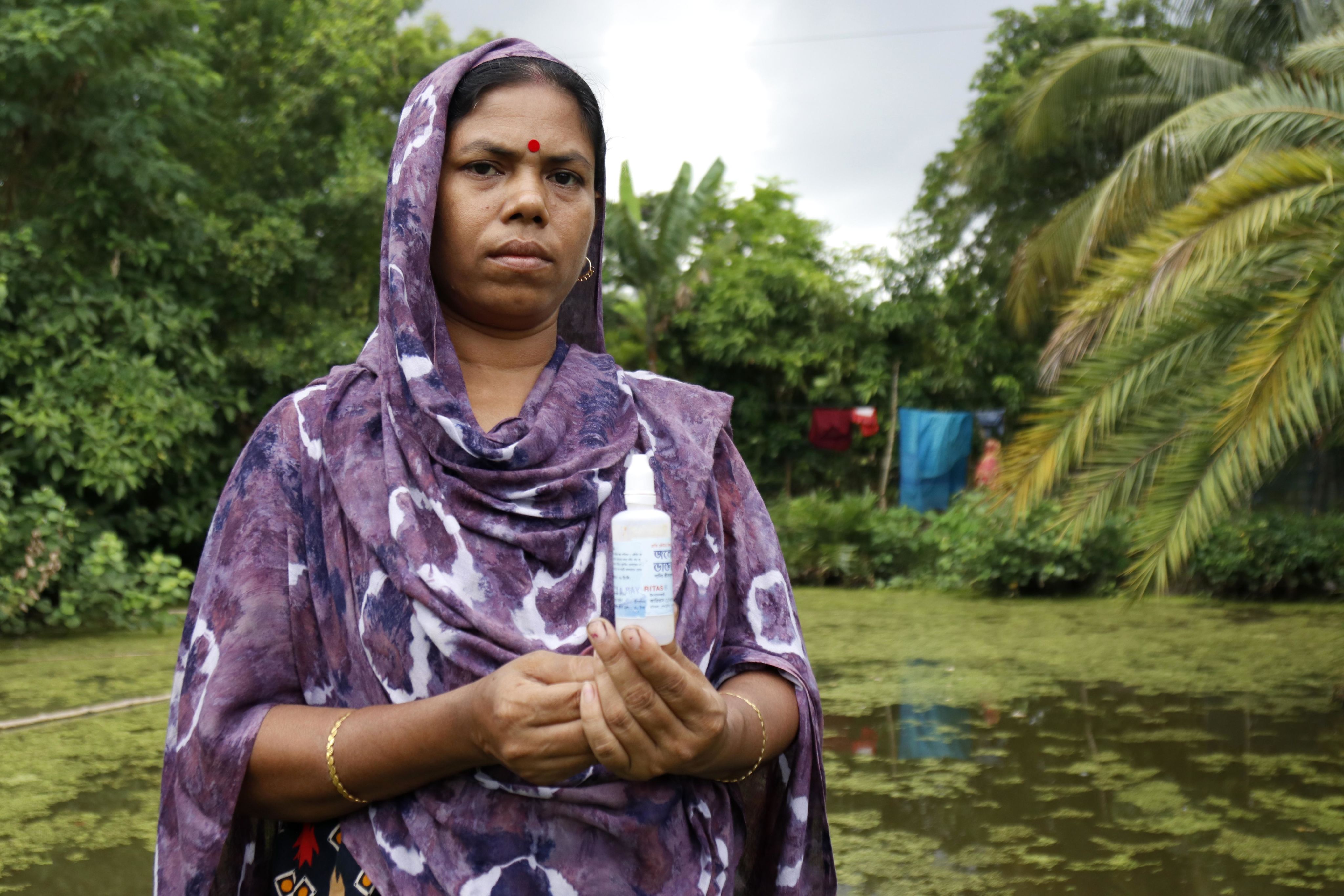
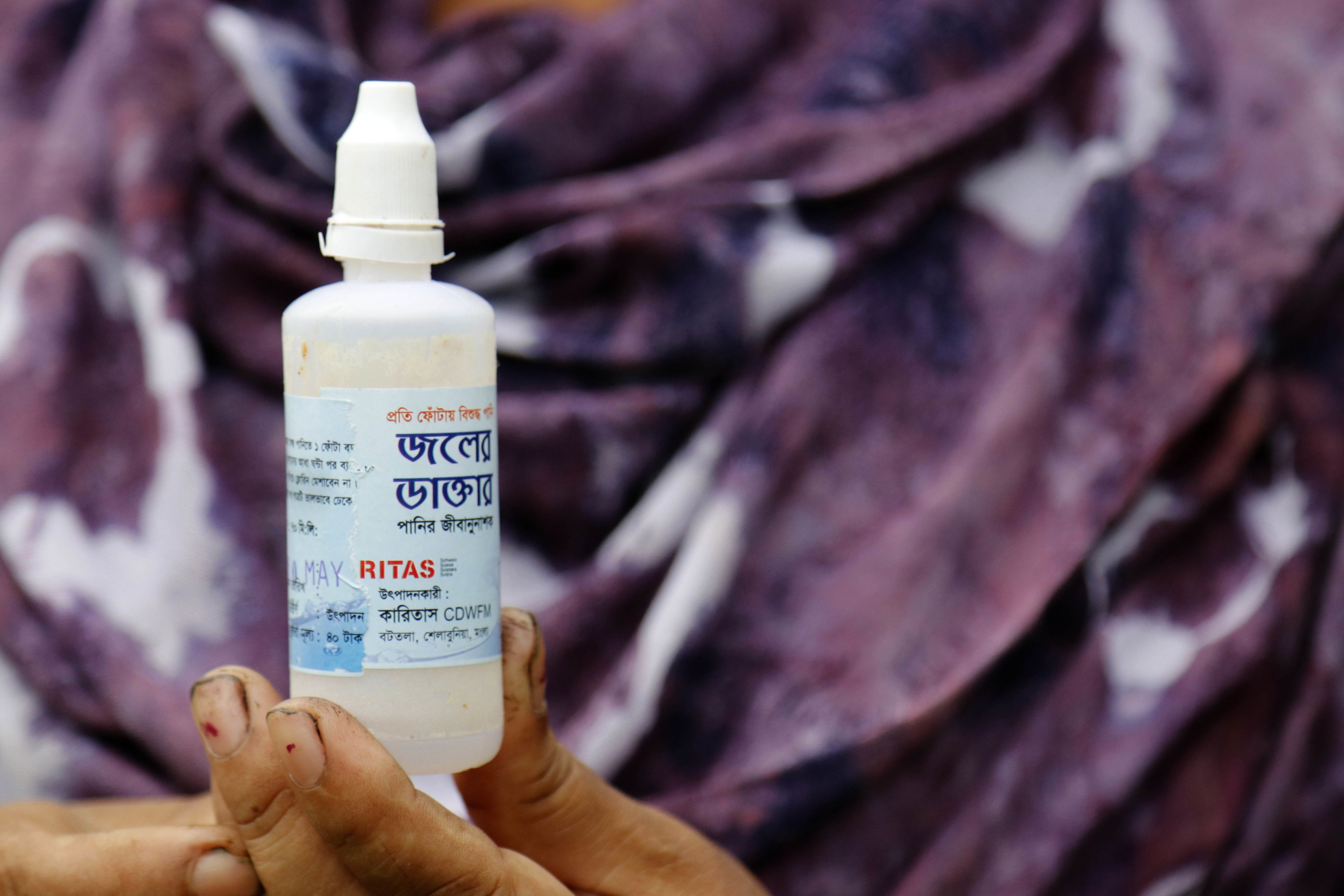
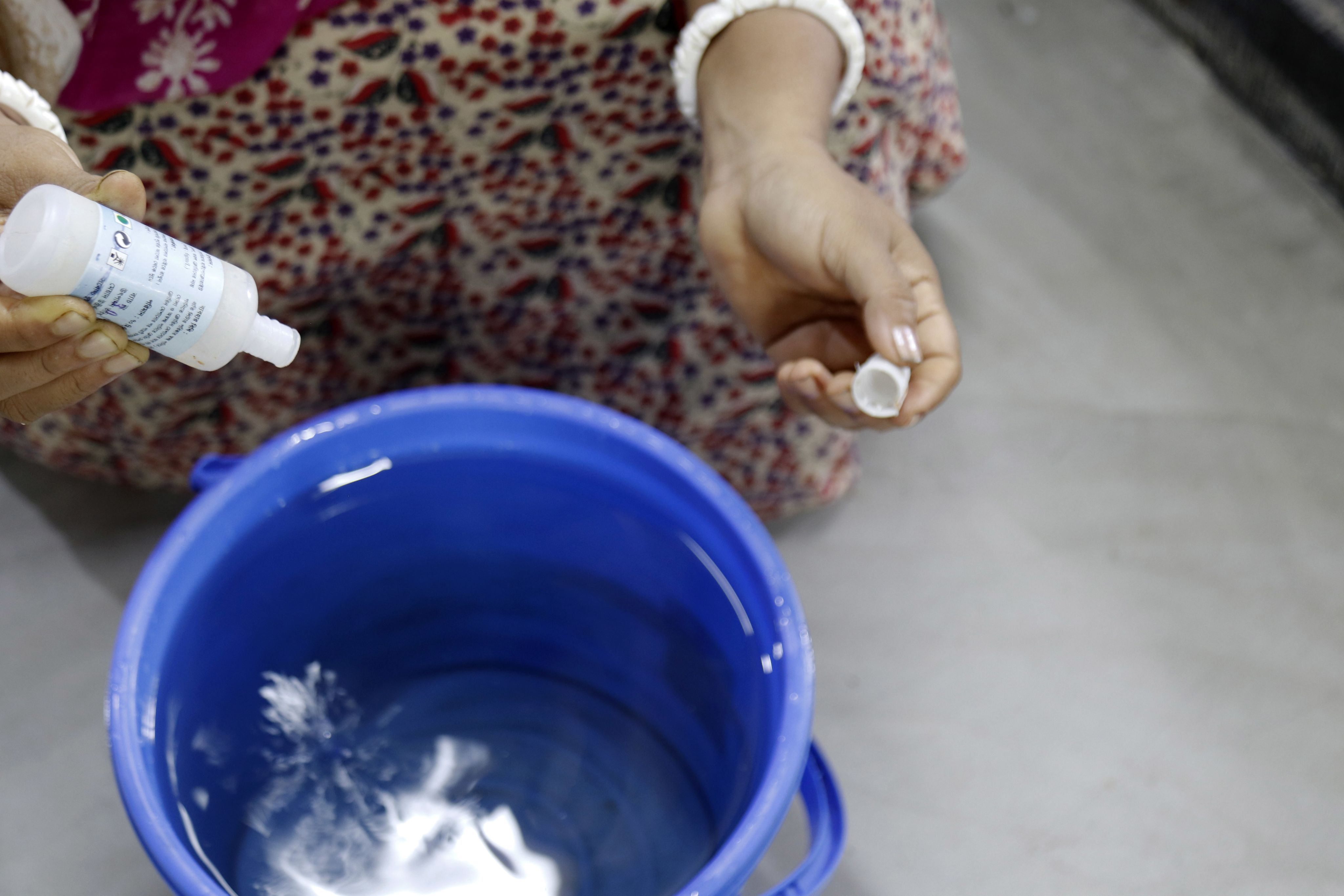
Digging for fair solutions
Despite the closure of the Water Doctor program, Caritas Bangladesh continues its initiatives, including the excavation of ponds and the collection of rainwater, which is then distributed to the community.
Caritas also maintains an ongoing tank distribution program, supplying 1000 or 2000-liter water tanks to facilitate the preservation of rainwater.
Das, however, said that there is a big challenge in obtaining funding for drinking water projects, as donors prefer initiatives related to infrastructure, agriculture, and climate change.
“We are no longer receiving funding from donors for any projects that focus on drinking water… But I believe that water is a significant crisis, considering the needs of the local community,” Das added.
The government has undertaken efforts to supply drinking water to the residents of this region, including the distribution of water tanks and the excavation of ponds.
However, there are allegations of corruption surrounding these initiatives. Powerful individuals have occupied water ponds, using them for fish farming, rendering the water unsuitable for drinking.
Even when water tanks are provided, they are often insufficient or selectively distributed, favoring the powerful.
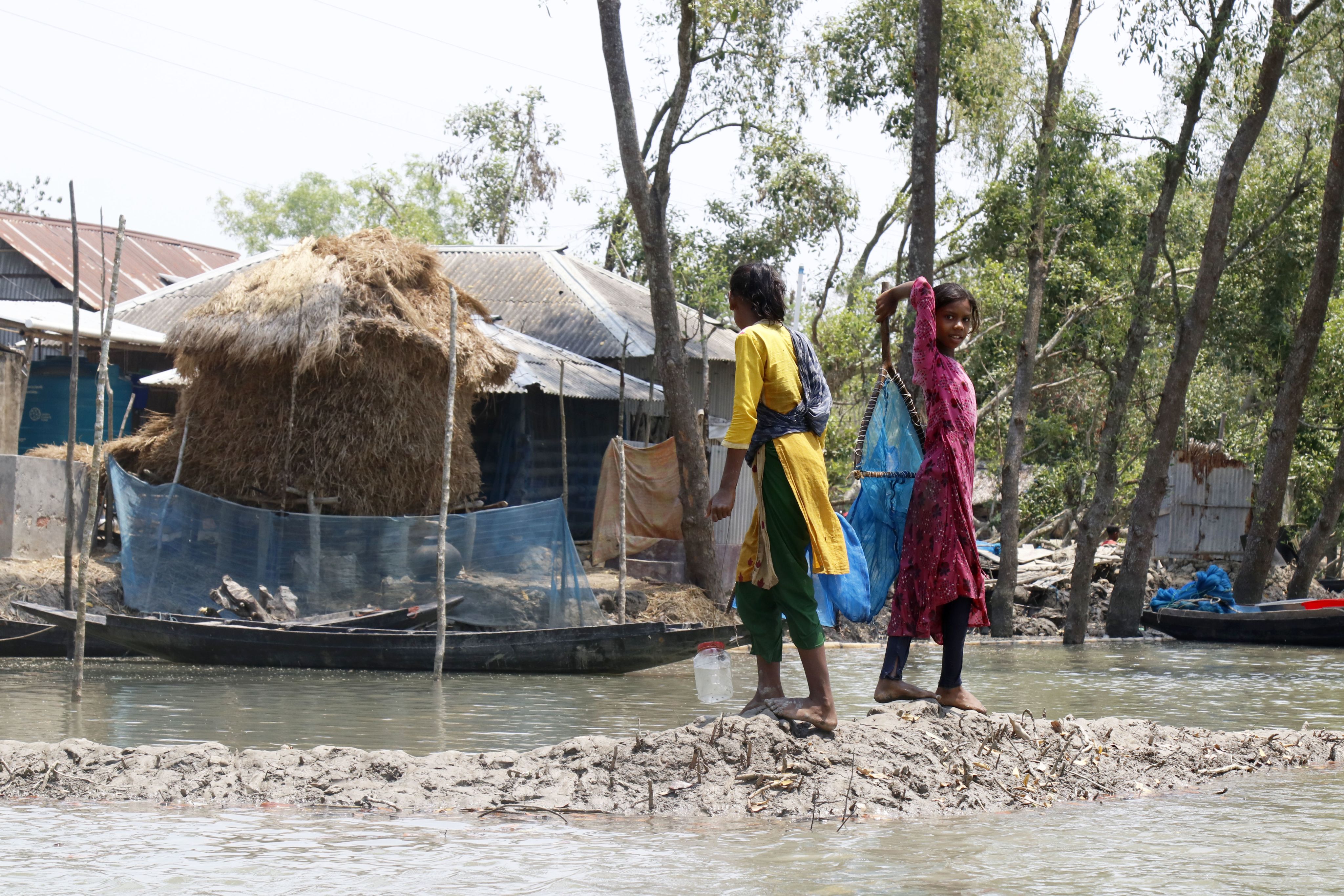
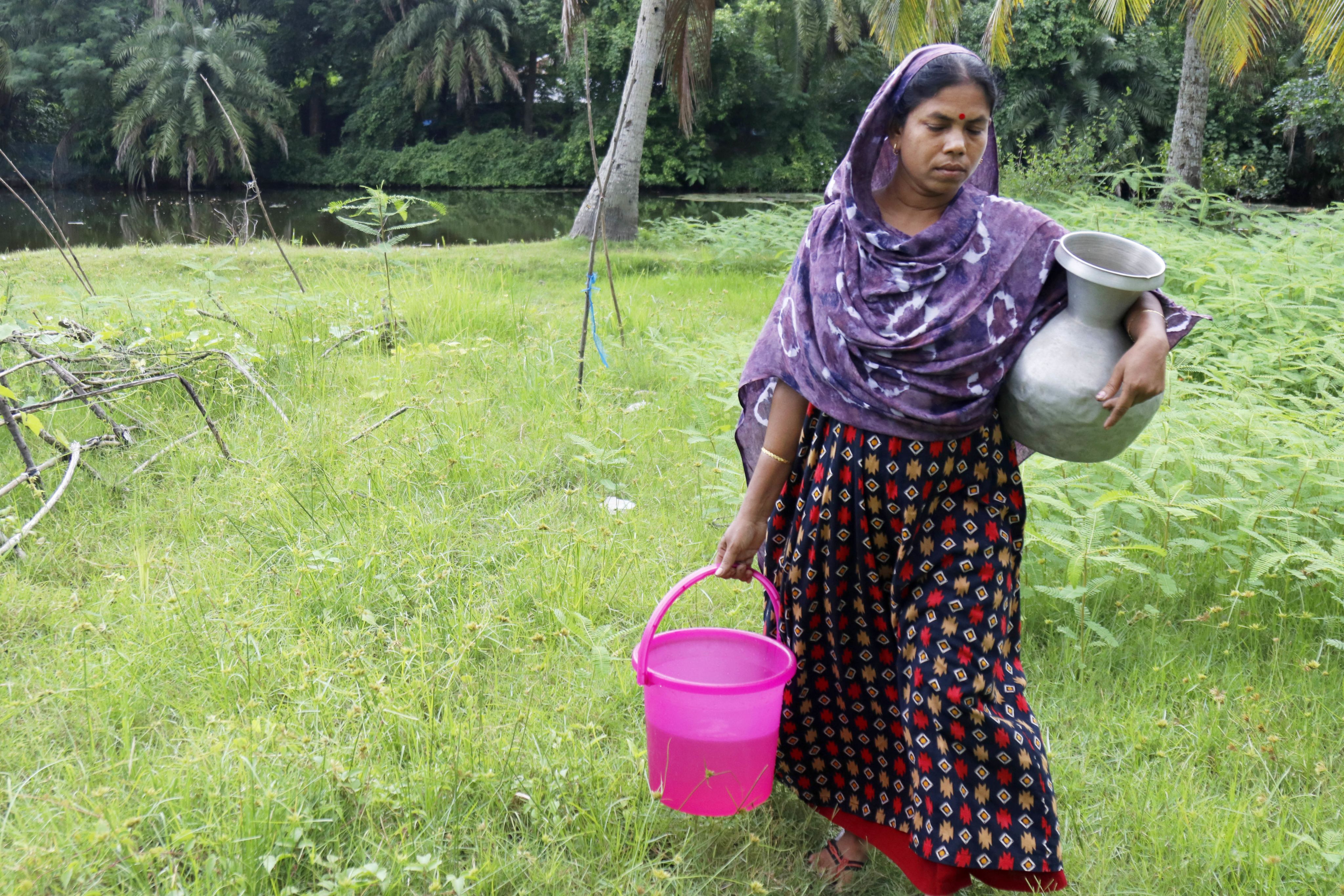

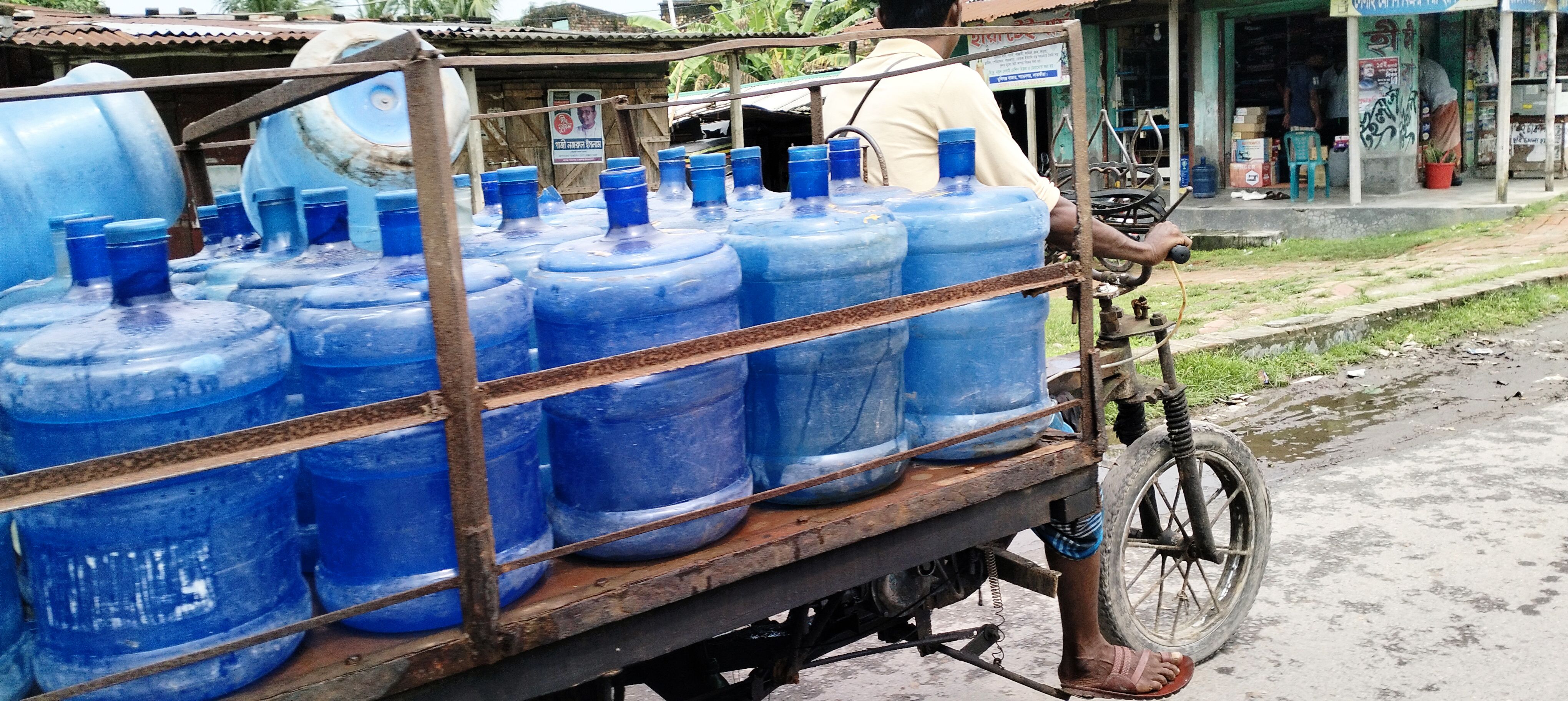
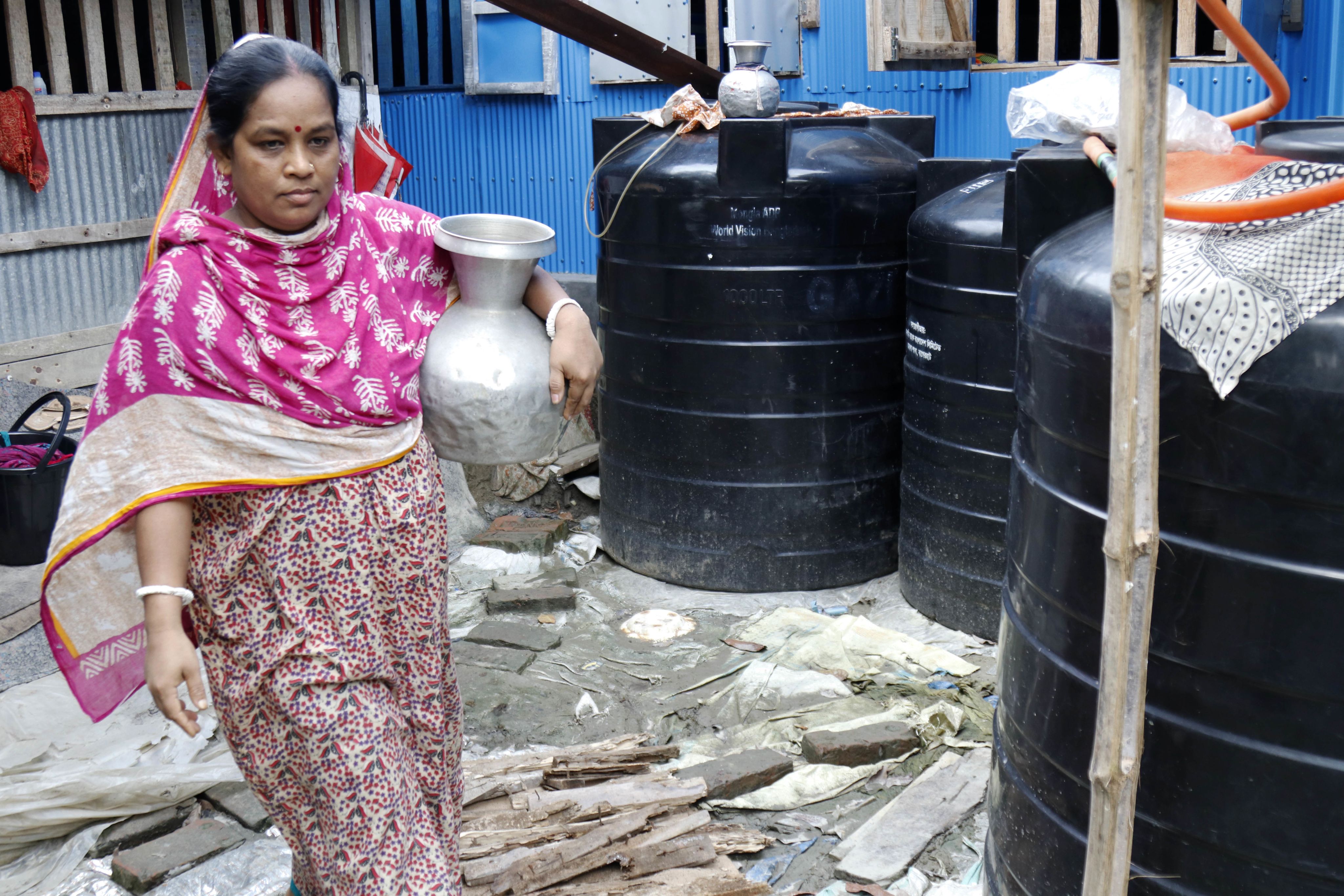

The severe drinking water problem in the coastal area exacerbated by salinity.
The severe drinking water problem in the coastal area exacerbated by salinity.

Akhi Mandal fetching water from the pond to her residence.
Akhi Mandal fetching water from the pond to her residence.

Purnima Mandal's husband brings pond water home, storing it in an earthen pot and using it for bathing.
Purnima Mandal's husband brings pond water home, storing it in an earthen pot and using it for bathing.

Villagers transporting water jars for sale by vehicle, priced at 60 taka (US$ 0.54) per jar.
Villagers transporting water jars for sale by vehicle, priced at 60 taka (US$ 0.54) per jar.

Purnima Mandal transporting water from her tanks to her home for consumption.
Purnima Mandal transporting water from her tanks to her home for consumption.
Chairman Abu Taher Hawladar, the elected public representative of the Mongla sub-district, shared his perspective on the water issues and hardships faced by the people in this area.
He noted that they have witnessed the water challenges in this coastal region since childhood, and while the issues persist, there has been a slight reduction.
"Ponds are being excavated by the government to retain rainwater for the benefit of the people. The government is providing large plastic cans to individuals, enabling them to store and consume water," said Hawlader.
He said the government is making efforts,
"but it is not feasible for the government alone; it requires the cooperation of all."
As for the social action arm of the Catholic Church in Bangladesh, Das said Caritas will continue to seek for better solution to the water crisis.
"We are currently working on purifying water through an artificial method, using machines and packaging it in jars for distribution. After continuing this initiative for six months, people will become familiar with accessing fresh water,” he said.
The backyard of a coastal house with concrete water tanks and a polythene rainwater collection system.
The backyard of a coastal house with concrete water tanks and a polythene rainwater collection system.
With generous support from
Aid to the Church in Need
Dreikönigsaktion
missio Aachen
Text and photos by Stephan Uttom Rozario
Produced by June Nattha Nuchsuwan
Edited by Mark Saludes
Published December 1, 2023
© Copyright MMXXIII LiCAS.news
